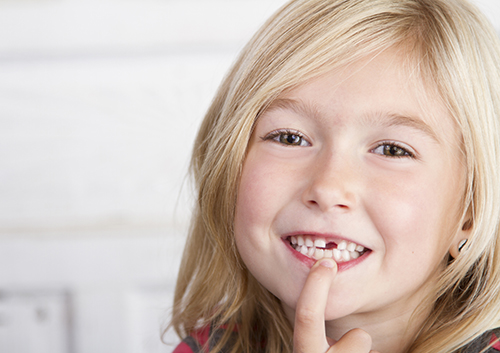
The grownups in your life help you with your dental care. After all, good dental health makes your life happier. Your teeth and gums feel great. You can eat crunchy foods. Your checkups and cleanings keep your smile healthy and bright.
And you want the same happy life for one of your best friends—your pet! Because February is Pet Dental Health Month, let’s talk about some ways you and your family can keep your dogs and cats healthy and happy, too.
The adults in your life make sure you eat a healthy diet. This includes serving foods filled with vitamins and minerals which are good for your teeth and gums. Pets also need to eat healthy meals, and there are special foods and treats made for their dental health. Some foods help keep teeth strong, and some tasty treats help clean the teeth.
Your veterinarian can help you find out the healthiest meals and treats for your dog or cat—and tell you which foods aren’t good for them!
Dogs—and some cats—love chew toys, so we need to make sure those toys are safe for them and for their teeth.
Chewing on bones, sticks, and hard plastic toys can break even the biggest and strongest dog’s tooth. If a toy is harder than your pet’s tooth, it can damage your pet’s tooth. Toys should be tough enough not to break into little pieces when they’re chewed, and big enough not to be swallowed. Your vet is a good person to ask about the best and safest toys for your furry friend. And speaking of your vet . . .
We talk about your pet’s veterinarian a lot, because veterinarians are both dentists and doctors for our four-legged friends. And just like you visit your dentist and doctor regularly to make sure you stay healthy, your pet sees the veterinarian for checkups, vaccinations, and dental exams.
Checking your pet’s teeth regularly is important because, while dogs and cats don’t get cavities the same way we do, they often suffer from gum disease caused by built-up plaque—the same kind of plaque which causes cavities and gum disease in people.
If your pet is showing any of signs of a dental problem—a broken tooth, really bad breath, brown or yellow stains on the teeth, not wanting to eat, pawing at the mouth, or lots of new drooling—it might be time to visit the vet for a dental checkup.
February is Pet Dental Health Month, but your dog or cat is your friend all year long. You and your family can help your pets to have healthier teeth and gums by feeding them the right foods, seeing they have safe toys, and visiting the vet regularly. Your love and care will help your furry friend live a longer, healthier life. That’s happy news for both of you!

Today, Dr. Iyer and our team at Dentistry 4 Kidz thought we would answer some of the most frequent questions about pediatric dentistry and oral health we hear from parents.
What constitutes a “healthy, balanced diet” for my child?
A healthy, balanced diet contains all the nutrients your child needs to grow, including one serving each of fruits and vegetables, breads and cereals, milk and dairy products, and meat, fish and eggs per day. Make sure your child limits snacking in between meals and limits how frequently they consume food or beverages that contain sugar, which is known to cause tooth decay. Besides pastries, cookies, and candy, sugars are usually found in processed foods such as crackers, cereals, and soda, as well as in condiments like ketchup.
Should my kid give up all foods that contain sugar?
Absolutely not, we simply recommend choosing and serving sugars sparingly. A food with sugar is safer for teeth if it is eaten with a meal, not as a snack. When your child chews during his or her meal, the saliva produced helps neutralize the acids that are found in sugary and starchy foods. Foods that are not easily washed away from your child’s teeth by saliva, water, or milk have more cavity-causing potential.
What causes cavities?
Many types of bacteria live in our mouths—some good, some bad. When these bacteria come into contact with sugary foods left behind on your child’s teeth after eating, acids are produced. These acids then attack the enamel, and eventually eat through the enamel and create holes in the teeth, which Dr. Iyer and our team call cavities, or caries.
How can I help my child avoid cavities?
This is a great question that we hear a lot. Make sure that your child brushes his teeth twice a day with fluoride toothpaste. Flossing daily is also important, as flossing can reach spots between the teeth that brushing simply can’t. And finally, we encourage you to schedule regular appointments with Dr. Iyer at our Wichita Falls, TX office so that we can check the state of your child’s teeth and gums, as well as provide a professional cleaning to protect him or her from cavities and gum disease.
What is the best way to clean my baby’s teeth?
We recommend you clean your baby’s gums after feedings with a damp, soft washcloth. This is even before your baby’s first tooth appears. As soon as his or her first tooth does appear, you may begin using a toothbrush with soft bristles and a small head. You can most likely find a toothbrush designed for infants at your local drugstore or ask us for one during your next visit.
What should I do if my child has a toothache?
First, we recommend rinsing the irritated area with warm salt water and placing a cold compress on his or her face if it is swollen. If you have any at home, give your child acetaminophen for any pain, rather than placing aspirin on the affected teeth or gums. Finally, give us a call as soon as possible to schedule an appointment with Dr. Iyer.
We hope that helps! Please give us a call if you have any questions or ask us next time you visit our office for your child’s appointment with Dr. Iyer! If you have any other questions, or would like to schedule an appointment, we would love to hear from you.

It seems like yesterday. There you were, comforting your baby through sleepless nights, soothing her with a dentist-approved teether, celebrating as that first tiny tooth poked through her gums. And now here she is running to show you that same tooth, wiggly, loose, and almost ready for the Tooth Fairy. Now what?
Be Prepared
Children normally lose that first tooth somewhere around the age of six, but a year or two earlier or later is not uncommon. If you ever took a business class, you might have heard of the inventory method called “First In, First Out.” Baby teeth operate much the same way! The two bottom front teeth, followed by the two upper front teeth, will probably be the first teeth your child loses. Once you notice some wiggling, let your child know what is going on and reassure her that it is a normal part of growing up.
What to Expect with that First Loose Tooth
Normally, baby teeth become loose when the pressure from the permanent tooth below gradually breaks down the roots of the primary tooth. If your child has a loose tooth, encourage him to wiggle, not pull. Typically, gentle wiggling is all that is needed to free a tooth that has lost most of its root and is ready to be replaced. Avoid pulling or forcing the tooth, because that can cause injury to the root area if the baby tooth isn’t ready to come out. Call our Wichita Falls, TX office if you have any questions about loose teeth. Dr. Iyer and our team also have suggestions if the baby teeth don’t become loose on schedule, or if they stubbornly remain in place even after the adult teeth have started to show up. One important note—if your child ever loses a tooth through accident or injury, call us at once. We might need to provide a spacer to give your child’s permanent teeth the proper time and space to come in.
Celebrate this Milestone with Your Child
The arrival of the Tooth Fairy is a familiar way to mark the occasion, and she can leave your child a note, a small gift, even a brand new toothbrush. Or explore other options!
If your child is fascinated by stories and traditions, learn about El Ratón Pérez (Perez the Mouse), a familiar tooth-collector in many Spanish speaking countries, or his French cousin, La Petite Souris (the Little Mouse). In other parts of Europe, Asia and Africa, children throw teeth on the roof, drop them in a glass of water, or hide them in a slipper. This is a great opportunity for you and your child to explore the world!
If your child likes science, look into books that explain the biology of baby and adult teeth in an age-appropriate way. You could print a chart of the primary teeth and take notes on each lost tooth as it makes way for the permanent tooth below. Or track her progress with photos showing the baby tooth, the gap left by the tooth, and the adult tooth as it comes in.
Losing that first tooth is an important moment for your child—and for you. Be prepared to celebrate another milestone together, and always feel free to talk to Dr. Iyer if you have any questions about this new stage in your child’s life.

The short answer to this question? Yes. Because your child’s breath is a reflection of his or her oral health, you should talk to Dr. Iyer if you notice any unpleasant changes. While better dental hygiene is usually the answer for young children, bad breath can also be a symptom of more serious problems.
Oral Hygiene
Most often, bad breath is simply a sign that your child needs a little help developing proper brushing and flossing habits.
Better oral habits mean not only fresh breath, but give those baby teeth the best chance of staying healthy until they are naturally replaced by adult teeth. After all, baby teeth not only help your child learn to eat and speak properly, but they act as necessary placeholders so the permanent teeth are able to erupt in exactly the right spot.
Talk to a member of our Wichita Falls, TX office team at your child’s next appointment if you are concerned about oral hygiene–they have many great suggestions for making brushing and flossing more efficient, comfortable, and even fun for your child.